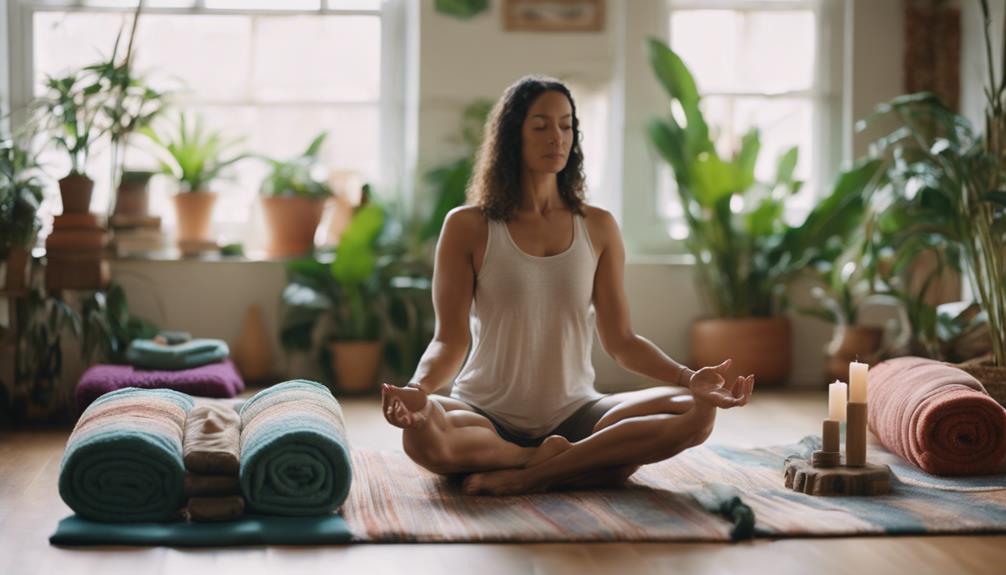Iyengar Yoga

“`markdown
What is Iyengar Yoga? Understanding the Basics
Iyengar yoga is a form of Hatha yoga that emphasizes precision, alignment, and the use of props to enhance the practice. Developed by B.K.S. Iyengar in the 20th century, this style is known for its systematic approach to asanas (postures) and pranayama (breath control). Iyengar yoga is suitable for practitioners of all levels, from beginners to advanced yogis, making it a popular choice worldwide. The focus on correct alignment helps practitioners improve their physical health, mental clarity, and overall wellbeing.
The Benefits of Practicing Iyengar Yoga
Practicing Iyengar yoga offers a multitude of benefits that extend beyond the physical. Physically, it enhances flexibility, strength, and balance, which are essential for overall fitness. The use of props, such as blocks, straps, and blankets, allows individuals to perform poses correctly while accommodating their current level of ability. Beyond the physical advantages, Iyengar yoga also promotes mental clarity and emotional stability. Regular practice can lead to reduced stress, improved concentration, and a greater sense of calm. Many practitioners find that the meditative aspects of Iyengar yoga also help them cultivate a deeper connection with their bodies and minds.
How Iyengar Yoga Differs from Other Yoga Styles
While many yoga styles focus on flow and movement, Iyengar yoga is distinct in its emphasis on alignment and precision. Unlike styles like Vinyasa or Ashtanga, which prioritize a sequence of movements, Iyengar yoga often holds poses for longer periods, allowing practitioners to explore the intricacies of each posture. Additionally, the use of props is a hallmark of Iyengar yoga—tools that help make poses accessible for everyone, regardless of skill level. This focus on alignment ensures that practitioners can develop strength and flexibility safely, reducing the risk of injury and promoting long-term benefits.
Related Posts:
Getting Started with Iyengar Yoga: Tips for Beginners
If you’re new to Iyengar yoga, it’s essential to approach your practice with an open mind and a willingness to learn. Start by finding a certified Iyengar yoga instructor who can guide you in understanding the fundamentals of alignment and the use of props. It’s crucial to listen to your body and practice at your own pace, especially if you’re new to yoga. Begin with basic poses and gradually progress to more complex postures as you build strength and confidence. Remember that Iyengar yoga is a lifelong journey of learning, so patience and dedication are key to developing your practice.
The Role of Props in Iyengar Yoga
Props play a pivotal role in Iyengar yoga, allowing practitioners to achieve greater depth and understanding of each pose. Common props include yoga blocks, straps, bolsters, and blankets. These tools enable students to maintain proper alignment and support their bodies in various postures. For instance, a block can be used to bring the floor closer in standing poses, while a strap can help in achieving a deeper stretch without straining. The thoughtful integration of props not only enhances the practice but also encourages students to explore their limits safely and effectively.
Finding an Iyengar Yoga Class Near You
If you’re interested in exploring Iyengar yoga, finding a class near you is easier than ever. Many yoga studios offer Iyengar yoga classes, and you can also find certified instructors through the official website of the Iyengar Yoga National Association of the United States (IYNAUS) or similar organizations in other countries. Look for classes that cater to your level, whether you are a complete beginner or have some experience. Attending a class led by a certified instructor can provide invaluable guidance and support as you develop your practice, ensuring you build a solid foundation in Iyengar yoga.
Common Misconceptions About Iyengar Yoga
Despite its popularity, several misconceptions about Iyengar yoga persist. One common myth is that it is only for advanced practitioners. In reality, Iyengar yoga is accessible to individuals of all skill levels, with classes designed to accommodate beginners. Another misconception is that the use of props indicates a lack of ability; however, props are actually a tool for enhancing practice and ensuring safety. Additionally, some people believe that Iyengar yoga is only about physical postures, overlooking the profound mental and spiritual benefits that come from a regular practice. Understanding these misconceptions can help you appreciate the full spectrum of what Iyengar yoga has to offer.
Integrating Iyengar Yoga into Your Daily Routine
Incorporating Iyengar yoga into your daily routine can profoundly impact your overall health and wellness. Start with short, manageable sessions, focusing on a few key poses each day. As you become more comfortable, gradually increase the duration and complexity of your practice. Consistency is vital; even a few minutes of yoga each day can make a significant difference in your physical and mental wellbeing. Consider setting aside time in the morning to energize your body or in the evening to unwind and relax. Additionally, blending Iyengar yoga with other forms of exercise can create a well-rounded fitness routine, enhancing your strength, flexibility, and mindfulness.
In conclusion, Iyengar yoga is an enriching practice that offers numerous physical, mental, and emotional benefits. Whether you’re a beginner or an experienced practitioner, the emphasis on alignment, precision, and the use of props ensures that this style of yoga is accessible to all. As you explore the many facets of Iyengar yoga, you’ll discover a pathway to improved health, greater self-awareness, and a deeper connection to your body and mind.
“`
This blog post follows SEO best practices by including the keyword “Iyengar yoga” naturally throughout the text, providing valuable information, and maintaining a clear structure with appropriate headings.How Yoga Helps With Mental Health